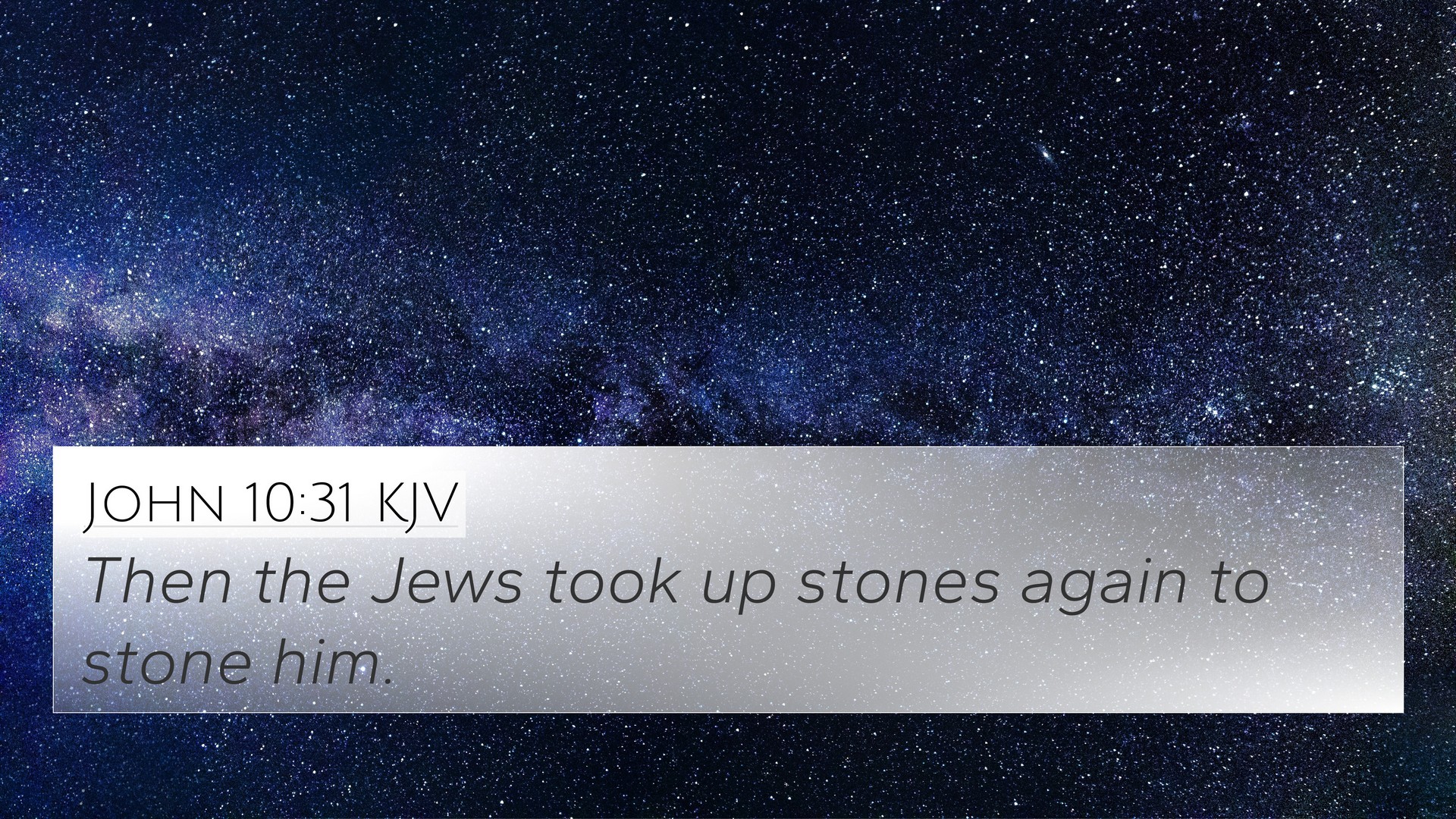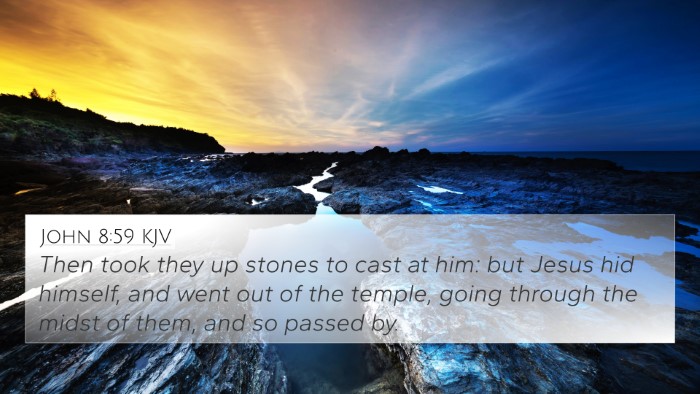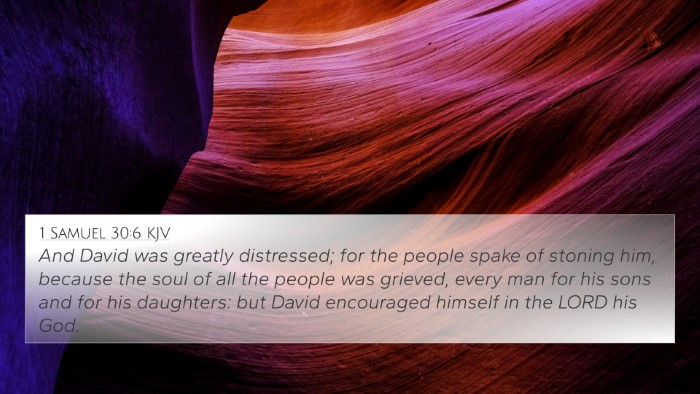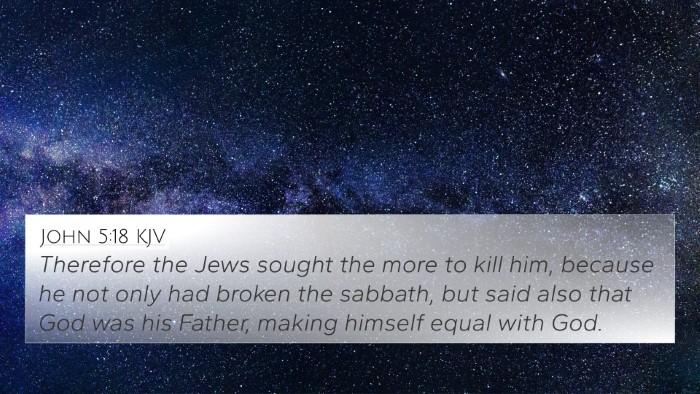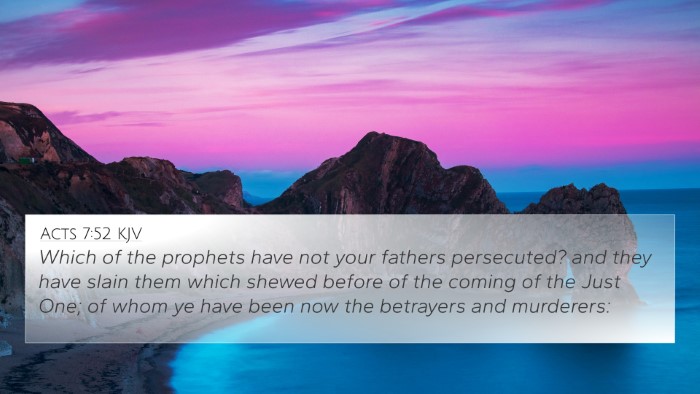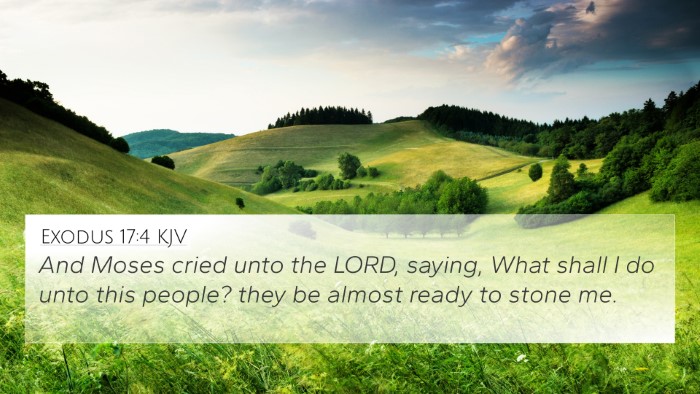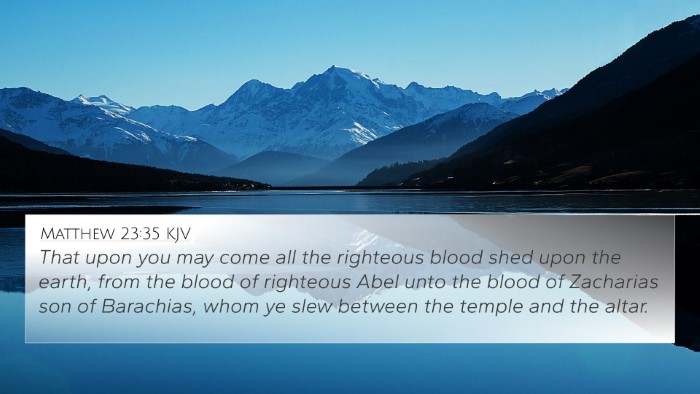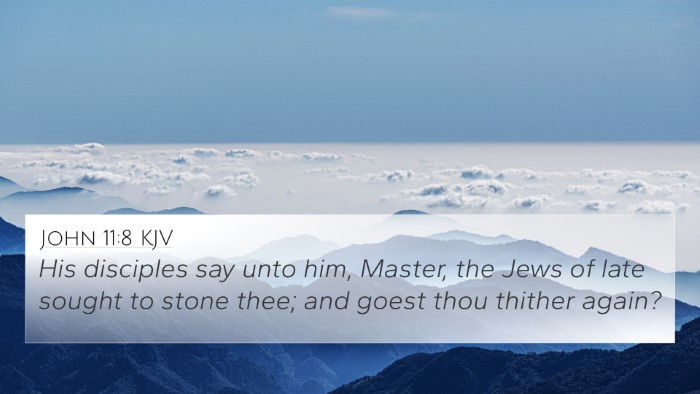Understanding John 10:31
John 10:31 states, "The Jews picked up stones again to stone Him." This verse, amidst the rich context of Jesus’ teachings about His identity and relationship with His Father, is a pivotal moment that illustrates the escalating tension between Jesus and the religious leaders of His time.
Contextual Background
This passage occurs in the larger narrative of John 10, where Jesus vividly describes Himself as the Good Shepherd. The Jewish leaders' response to His claims reveals their deep-seated opposition to His teachings and identity.
Insight from Public Domain Commentaries
Matthew Henry Commentary
Matthew Henry notes that the attempt to stone Jesus was a direct response to His claim of unity with the Father. By declaring that He is one with God, Jesus challenged the very foundation of Jewish monotheism as understood by the leaders. This verse highlights the blindness of the rejecting scholars and serves as a warning against hardened hearts that are unwilling to recognize divine truth.
Albert Barnes' Notes on the Bible
Albert Barnes emphasizes that the accusation of blasphemy arises when Jesus makes the audacious claim of divinity. He explains that the Jews viewed this claim as grounds for stoning according to Levitical law, specifically referencing Leviticus 24:16, which states that blasphemers should be put to death. This violence reflects their fear and anger at losing their authority and the changing views on the law.
Adam Clarke's Commentary
Adam Clarke elaborates on the nature of the stones being used, emphasizing the seriousness of the Jews’ intentions. He provides cultural insights into stoning practices, as well as the theological implications of Jesus’ statements. Clarke also highlights that the stones symbolize not just physical violence but a larger rejection of Christ's messiahship.
Thematic Connections and Cross-References
To deepen our understanding of John 10:31, we can examine several related Bible verses that provide thematic context:
- John 8:58: Jesus' declaration "Before Abraham was, I am," emphasizes His eternal nature.
- John 1:1: Highlights Jesus' divine nature as the Word being with God.
- Leviticus 24:16: Establishes the law regarding blasphemy in the Israelite community.
- Matthew 26:65-66: The high priest's demand for Jesus' condemnation reinforces the seriousness of the charges against Jesus.
- Mark 14:61-62: Jesus identifies Himself as the Messiah, provoking further backlash from the Jewish leaders.
- Acts 7:58: The stoning of Stephen parallels the rejection of Christ and highlights the ongoing conflict.
- Hebrews 13:12-13: Discusses suffering outside the camp, providing insight into the consequences of following Christ.
Application and Reflection
John 10:31 is not just a historical account; it is rich with implications for modern believers. It serves as a reminder of the potential backlash faced when proclaiming the truth about Jesus. This passage encourages Christians to draw courage from the example of Jesus, standing firm in the face of opposition.
Conclusion
In exploring the interconnectedness of Scripture, it is evident that John 10:31 serves as a significant point of tension presenting the ultimate conflict between Jesus and the religious authorities. By cross-referencing with other passages, believers can build a comprehensive understanding of the narrative and recognize the foundational truths about Jesus' character, mission, and the persistent opposition faced by those who follow Him.
Further Study on Cross-Referencing
If you're interested in how to utilize these insights effectively, consider the following:
- Tools for Bible Cross-Referencing: Utilize a bible concordance or a bible cross-reference guide for deeper study.
- How to Use Bible Cross-References: Familiarize yourself with cross-referencing Bible study methods to identify related verses.
- Comprehensive Bible Cross-Reference Materials: Invest in resources that provide detailed analyses of verse connections.
